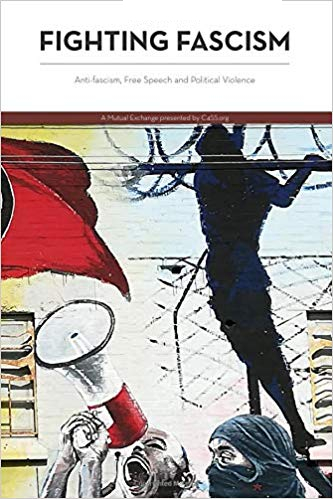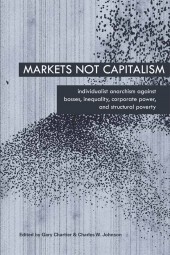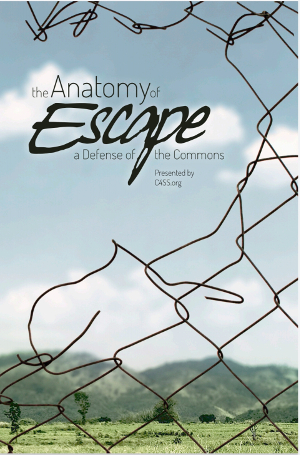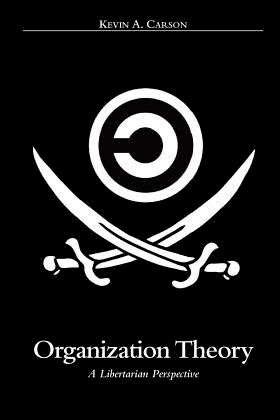To attribute to money a concept of bestowing freedom upon an individual owner may well exist as a theoretical possibility. Yet ownership is itself a contested concept. As is freedom. By bestowing freedom on the owner, it effectively prompts the dominance of certain types of power to come to the fore of monetary and economic relations. We can see this in Weber’s concept of a struggle for economic existence [1], whereby the formation of prices is a struggle for dominance, with money as the main weapon for such a struggle. Thus the use of money and with it the creation of prices for commodities is brought out of a struggle for who determines this, and who can win the best deal from such a battle. In this sense, capitalistic markets are the battleground for the domination of certain winners and losers, with the codification of power and dominance written into those who enter either of these two classifications.
However, the market did not simply evolve into this reality. The creation out of spontaneous order is simply a myth in the murky realities of the creation of capitalism and its monetary relations. The very history of primitive accumulation is that of the creation of wage labour and the domination of certain economic forms and expressions by the powers of capital. This furthers accumulation of capital and puts money as the central driver of the capability to maintain power and with it accumulation. The history of enclosures, both medieval and modern, and the destruction of any semblance of independence for the peasant classes and its spiritual successor, the proletariat, meant that for money to attribute freedom to an individual, that individual must already hold a position of distinct power. Certainly, history is not unitary, and there are examples of money actually absolving populaces of extreme authoritarianism found within certain social structures, it cannot excuse the historical reality of the destruction of community ownership of land and the independence of classes of people [2] from the dominance of capitalism.
The allotting of wage labour relations allows for the attribution of freedom to certain people who control money. Other relations of monetary significance, such as mutual credit systems and community ownership, are pushed into the background or outright destroyed. Wage labour, and the primitive accumulation that created its fundamentals, acts as a barrier to the attainment of freedom. Equally, the monetary relations of creditor-debtor limits the potential of freedom that comes from money. Rather than freeing individuals from a system of skewed power, as suggested by Felix Martin and Mary Douglas, we simply go from the former into a new system of power, that of the dominance of capitalist organisation and the monetary relations that come from it.
With this, we see the fundamental issue of money, that of control. There are limits to power and freedom. They play around each other, reproducing certain techniques useful to those in power. All knowledge and its production constitutes a form of power, with it being a characteristic relation of people. Thus, placing this in the context of money, money will always exist and it will have corresponding power relations. But who controls it changes that correspondence. Spontaneously ordered control mechanisms [3] can develop that limit the ability of domination over others. A politics of resistance can be created, with control being vested in a more distributed manner. The Weberian struggle of existence in the market can be changed by its actors. The fundamentals of money are not solid truths, but rather characteristics of power that can be resisted.
The idea that money absolves the worst crimes embedded social relations does have a convincing history. “Money in its nature is essentially an instrument of freedom” [4], with the capacity to end authoritarian control by opening up the possibilities of trade and new socio-economic relations. Felix Martin paints a similar picture, showing that “traditional social obligations were transformed into financial relationships” [5]. A new ability to break free of traditional hierarchies, which enforced upon individuals and classes a certain position with which they would most likely never leave behind, meant that the value of man was no longer his societal role, but rather his capability to accumulate money [6]. With this came the early market “as the organising principle of trade, of prices as the instructions guiding human activity” [7]. Other values were subordinated to the totality of price and trade. What mattered was what a commodity was worth. Rather than the Polanyian matrix of commodification affecting social relations, ripping up the core of some peoples existence, there are “patterns of social domination, exclusion and hierarchy that markets sometimes act to break down” [8].
Its a rosy picture, but it doesn’t represent the realities of money. Certainly, marketised money economies have allowed for the breaking of caste and class systems which entrench inequality, but it doesn’t mean money itself doesn’t act as a control mechanism which can close doors for individual exigencies [9]. Simply looking at Martin’s analysis of the transformation of Athenian sharecroppers from feudal relations to monetary relations, there is a turn towards contractual tenancy via rents [10]. Federici noted a similar trend in feudal relations in much of Europe with the commutation of labour services, which led to the development of some peasants having more freedom, but for the poorer peasants it meant a radical change in their lives, leading to new class relations as lords and richer peasants could use poor peasants as a class of wage labourers, leading to a landless proletariat due to the need for poor peasants to go into debt to afford rents and harvests [11]. Thus money has a capacity to change social relations in the way of creating newer classes for exploitation.
The general history of the expansion of this cash nexus shows a further trend toward commodification and social dislocation. “Improvements…are, as a rule, bought at the price of social dislocation” [12], as seen in the enclosures. These are examples of primitive accumulation, the “expropriation of European workers from their means of subsistence, and the enslavement of Native Americans and Africans to the mines and plantations of the ‘New World'” [13]. Such things were codified by the creation of monetary relations through forces out of the control of those most affected. By separating the labourer from the means of production, making them reliant on wages, a monetary relation is developed that benefits the owners of the means of production. “The process, therefore, that clears the way for the capitalist system, can be none other than the process which takes away from the labourer the possession of his means of production” [14] i.e. the historical enclosures in Western Europe and the colonies. Carson notes that fertile land in Kenya was stolen by the colonial authorities for cash-crops and the landless farmers were pushed into wage labour by a “stiff poll tax that had to be paid in cash” [15]. This type of monetary relation, the enforcement of a tax debt, was seen as the best way of creating wage labour, as it removed the Bukusu right to land that was a fundamental part of Kenyan society [16] and developed the type of landless labourers characteristic of post-enclosure Europe. The primitive communism that existed, with its mutualities and solidarity among labourers and peasants, as imperfect as it was, presented a reality of some control over life. The feudal village represented the seeds of an alternative to the hierarchies and control of feudalism [17]. Yet its destruction pushed forth new monetary relations and the removal of communal land, and with it the removal of real control of one’s socio-economic surroundings.
This an act of disembeddedness. The separation of an economy from its social structures, and with it the creation of a “market society” [18]. Cultural aspects of early mercantile capitalism suggest that while skewed power relations were part of non-market societies, capital’s domination was hardly a panacea relative to European alternatives developing in the Feudal era and the early capitalist era. Capitalist monetary relations engender separation, of worker from production, and of money from social relations. This entails modern wage labour, but also the creditor-debtor relation that allows for the wielding of economic power, such as with the introduction of the poll tax in Kenya. When one is in debt to you, you have control. Fundamentally, the issue of money comes down to control and who wields power. Money under capitalism does not entail freedom, but rather control which may create freedom, but also create despotism.
Money then becomes a system of control through which systems of power and domination are pushed. The relation of creditor and debtor is of central importance in maintaining this relation, allowing for the development of wage labour and dependence on a class of owners as seen in Europe during the enclosures and in the colonisation of Kenya. The ability for independence is curtailed. Such can be seen in the Price Revolution of 16th century Europe, where the large scale importation of gold and silver by colonial empires led to “a massive redistribution of wealth and a new proletarianization process” [19], with the destruction of real wages and entrenchment of poverty, leading to mass starvation and destroying the independence of the working classes. So when money and freedom are equated, the question is who has the freedom.
The eventualities of this transformation have now become commonplace. The development of an “entrepreneur of the self” [20], managing one’s own employability and indebtedness, allows for the relation of creditor and debtor to be maintained. Such an existence comes with shadows of economic certainties, such as liberty and wealth [21]. With value being measured relative to money, an idea of liberty is crafted by money spent on consumables rather than by a sense of economic control or action. Equally, wealth is seen as capital accumulated, usually from forms of speculation and rent, rather than through value creation in the real economy. Such ideas may encompass some concept of freedom, but only insofar as it is limited by those who create and control money. Money acts as a panopticon, inducing in “the inmate a state of conscious and permanent visibility that assures the automatic functioning of power” [22], with freedom only a consequence of decisions and mechanisms one has no part in. With money, most is created by banks, the agents of capitalism, and the state, whose actions during the Price Revolution and the move from feudalism to capitalism show an authoritarian application of monetary relations.
Ingham has noted that capitalist money is a debt relative to the state’s ability to tax. Capitalist credit money specifically found its widespread adoption through the state using it as a tool of economic organisation in relation to tax debts. “As the largest makers and receivers of payments, and in declaring what was acceptable as payment of taxes, states were the ultimate arbiters” [23] of credit-money, using the means developed in trading networks for larger, colonial economies. This led to, in the case of England, a “coalescence of the interests of commerce and statecraft” [24], with which comes certain power relations being encoded. Thus both vested interests and tax debts are developed. With the latter, the violence developed is evident in the use of enclosures. These events were met with widespread opposition, particularly against new taxes on religious ceremonies [25]. Taxes codified new monetary relations which engendered the creditor-debtor relation, with the state as the overarching arbiter. This meant violence via primitive accumulation, expropriation of land and the destruction of traditional socio-economic institutions.
The banking system also has power relations that lead to centralisation. Banks have the capacity to create money with interest, meaning the “money supply must continually expand and the economy must grow” [26], pushing the limit of the Earth’s biocapacity. In the Polanyian matrix, this represents a disembeddedness as institutions that limit or socialise the needs for constant growth are marketised and put into monetary frameworks, reaching that shadow of wealth that Goodchild described. This leads to a disconnect of real world wealth creation and stocks and exchanges[27], and an inflationary environment that reduces the value of money, inflates land prices and negatively effects wages [28]. Power relations that benefit shareholders and bankers, the modern owners of the means of production, are developed, with workers wages being depressed in favour of the shadows of economic certainty.
Continual growth itself leads to consumption, which then leads to the indebtedness of modern economies as seen in credit cards, which are a microcosm of “permanent debt” [29]. Through interest, wealth is redistributed from “the population, business, and the Welfare State to creditors” [30]. Such a mechanism acts a system of exploitation, removing wealth from the real economy and into the realm of speculation and debt. These represent a new form of rent, extracting money from settled wealth rather than value creation, “a machine for capturing and preying on surplus value in conditions created by modern-day capitalist accumulation” [31]. It is no longer about capital production but about ownership and control.
What this shows is that the fundamental issue is one of control of money and its creation. Finance is a central part of an economy, “impossible to…separate from production” [32], much in the same way that power is a central social relation. “One is always ‘inside power, there is no ‘escaping’ it, there is no absolute outside where it is concerned” [33]. Going back to the two circumstances of money, that of debt and remuneration, we see an “asymmetry of forces” [34] where power is held by those who are creditors, the modern owners of the means of production, separated from the realities of its existence as Marx described. Money itself has no necessary material value, but is rather a representation of socio-economic relations, and within those relations there exists power, particularly the power of subjectivation [35].
We can see this in the eye of the panopticon, where money “automatizes and disindividualizes power” [36] by creating the illusion of freedom in its midst. Freedom is not measured by economic participation or by value found in the real economy of production and labour, but by the capacity to earn wealth from speculation and rent. Large tracts of wealth are earned not from technological innovation but from financial speculation, intellectual property and other forms of rent [37]. The forces of labour, on the other hand, have seen stagnant wages relative to increased productivity [38] and have been subject to increased indebtedness through regimes of privatised Keynesianism. Within neoliberalism, there was the growth of derivative markets and stock options for the rich (forms of rentierism as Lazzarato describes) and credit markets for the poor and middle classes, as seen in increasing usage of mortgages and credit cards [39]. Increasingly debt-based economies allowed for further rentierism at the top and a restructuring of the welfare state at the bottom, leading to responsibilisation and the entrepreneur of the self, a kind of petty imitation of the rent of the rich.
By seeing this panopticism we see that money is a function of control. Its supply and its power relations are relative to the struggle of market forces as Weber described, as well as the struggle of political power. While the politico-economic elite can rely on tax revenues, interest and their positions as creditors and rentiers, the poor rely on continual indebtedness, whether it be in student loans, credit cards or mortgages. Such a dichotomy can most clearly be seen in the bank bailouts and subsequent QE programs, which served to leverage banks for more speculation rather than an injection of money into value-creating activities [40], while workers and the lumpenproletariat suffer with stagnant wages and increasingly unsustainable levels of personal and household debt.
To say freedom is the epitome of money is making a mistake in understanding the totality of what freedom encompasses. Dispossession of actual political or economic control is not made up by the capability to access a multitude of consumer goods, or to own one’s home through a mortgage. These are shadows of liberty, masking that lack of control, and showing a capitalocentric discourse, one of “a heady mix of freedom, individual wealth, unfettered consumption, and well-being trickled down to all” [41], which doesn’t reveal the totality of what money is. It goes back to Douglas’s argument of money as freedom. She also noted it as a form of control, and contrasted it to coupons, nominally control systems but that have an equally spontaneous development like money [42]. What coupons show is that money under different systems of control can allow for freedom. Money need not be a totalising concept conscripted to centralised power in the form of capitalism or the state, with compound interest or the necessitation of primitive accumulation to engender relations of wage labour. Rather, money can be relative to socio-economic relations, expressed in debt forgiveness, mutual credit clearing systems, time banks or local currencies. Here power is vested in those who use the money and create value within it. Rather than a tool for speculation and rent, and a power relation that codifies both the wage labour and creditor-debtor relation, money can be representative of distributed power relations, as in participatory citizenship or local market structures. Finance and power are an ever-present part of life. They are inescapable socio-economic realities, but that does not mean they cannot be used for freedom. However, money, as seen and defined today by capitalist class relations, is not an act of freedom. The latter is not an attribute of the former. The dichotomy of commodified money on the one hand and non-commodified on the other is frankly a false one. Money is imbued with social relations and issues of governance, but equally with a need for a medium of exchange. Thus a matter of freedom is not a matter of whether money is commodified or non-commodified, but about who has control, and whether that be in the area of pure spontaneous order or of spontaneously ordered control mechanisms.
Notes:
1. Ingham, G. 2004, 67
2. Federici, S. 2004, 9
3. Douglas, M. 1967, 120
4. Douglas, M. 1967, 120
5. Martin, F. 2013, Chapter 3
6. Martin, F. 2013, Chapter 3
7. Martin, F. 2013, Chapter 3
8. Holmes, C. 2014, 528
9. Douglas, M. 1967, 121
10. Martin, F. 2013, Chapter 3
11. Federici, S. 2004, 28-29
12. Polanyi, K. 2001, 79
13. Federici, S. 2004, 63
14. Marx, K. 1887, 507-508
15. Carson, K. 2008
16. Ndalilah, J. 2012, 282
17. Federici, S. 2004, 72
18. Polanyi, K. 2001, 74
19. Federici, S. 2004, 76
20. Lazzarato, M. 2012, 94
21. Goodchild, P. 2013, 53
22. Foucault, M. 1991, 201
23. Ingham, G. 2004, 122
24. Ingham, G. 2004, 122
25. Wood, A. 2002, 50
26. Flomenhoft, G. 2016, 74
27. Flomenhoft, G. 2016, 75
28. Flomenhoft, G. 2016, 76
29. Lazzarato, M. 2012, 20
30. Lazzarato, M. 2012, 20
31. Lazzarato, M. 2012, 21
32. Lazzarato, M. 2012, 22
33. Foucault, M. 1978, 95
34. Lazzarato, M. 2012, 34
35. Lazzarato, M. 2012, 35
36. Foucault, M. 1991, 202
37. Jacobs, D. 2015, 18-21
38. Solow, R. 2015
39. Crouch, C. 2009, 390
40. Goodchild, P. 2013, 49
41. Gibson-Graham, J.K. 2006, 55
42. Douglas, M. 1967, 121
Bibliography
Carson, K. (2008). The Subsidy of History. Available: https://fee.org/articles/the-subsidy-of-history/. Last accessed 19th Apr 2016.
Crouch, C. (2009). Privatised Keynesianism: An Unacknowledged Policy Regime. The British Journal of Politics and International Relations. 11 (1), 382-399.
Douglas, M. (1967). Primitive Rationing. In: Firth, R. Themes in Economic Anthropology. United Kingdom: Tavistock Publications. 119-147.
Federici, S. (2004). Caliban and the Witch. New York: Autonomedia.
Flomenhoft, G. (2016). Escaping the Polanyi Matrix. Real-World Economics Review. 74 (1), 98-123.
Foucault, M. (1991). Discipline and Punish. 3rd ed. London: Penguin Books.
Foucault, M. (1978). The History of Sexuality 1: An Introduction . 3rd ed. New York: Vintage/Random House.
Gibson-Graham, J.K. (2006). A Postcapitalist Politics. Minneapolis: University of Minnesota Press.
Goodchild, P. (2013). Exposing Mammon. Dialog: A Journal of Theology. 52 (1), 47-57.
Holmes, C. (2014). Introduction: A post-Polanyian political economy for our times. Economy and Society. 43 (4), 525-540.
Ingham, G (2004). The Nature of Money. Cambridge: Polity Press.
Jacobs, D. (2015). Extreme Wealth is Not Inherited. Available: https://www.oxfam.org/sites/www.oxfam.org/files/file_attachments/dp-extreme-wealth-is-not-merited-241115-en.pdf. Last accessed 20 Apr 2016.
Lazzarato, M. (2012). The Making of the Indebted Man. Los Angeles: Semiotext.
Martin, F (2013). Money: The Unauthorised Biography. London: Bodley Head.
Marx, K. (1887). Capital: Volume I. Moscow: Progress Publishers.
Ndalilah, J. (2012). Colonial Capitalism and the Making of Wage Labour in Kimilili, Kenya: 1900-1963. International Journal of Humanities and Social Science. 2 (23), 282-290.
Polanyi, K. (2001). The Great Transformation. 3rd ed. Boston: Beacon Press.
Solow, R. (2015). The Future of Work. Available: http://www.psmag.com/business-economics/the-future-of-work-why-wages-arent-keeping-up. Last accessed 20th Apr 2015.
Wood, A. (2002). Riot, Rebellion and Popular Politics in Early Modern England. Basingstoke: Palgrave.








